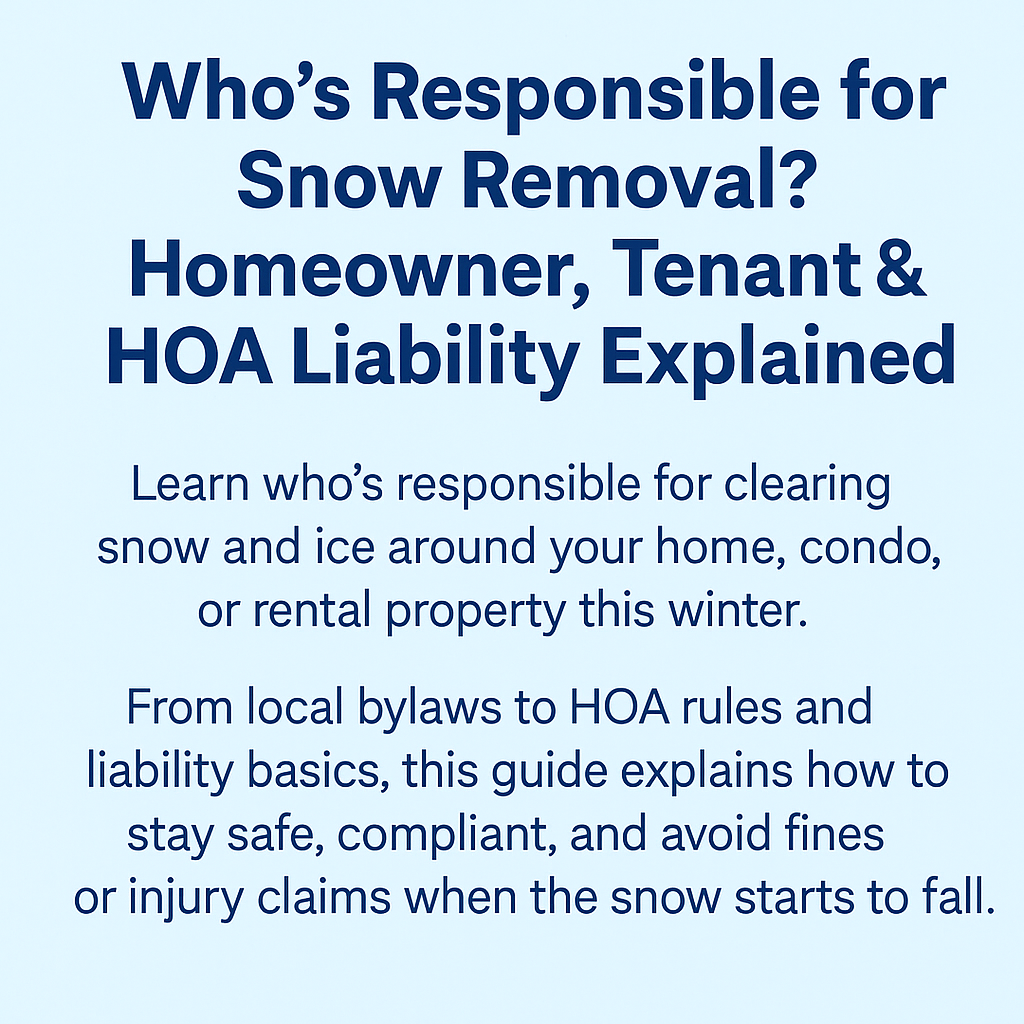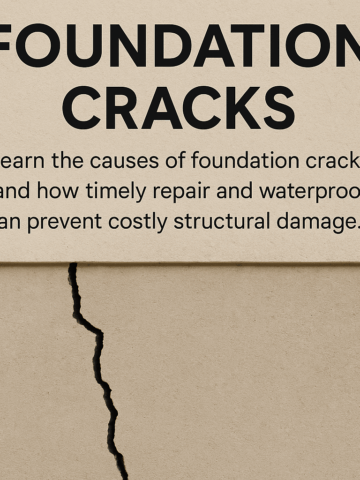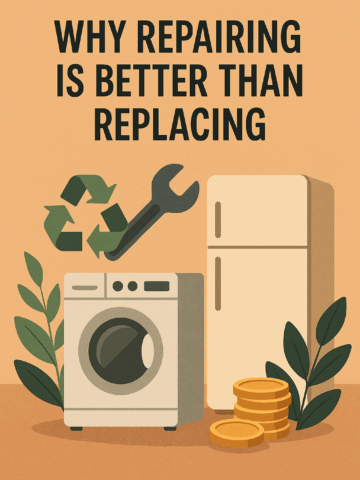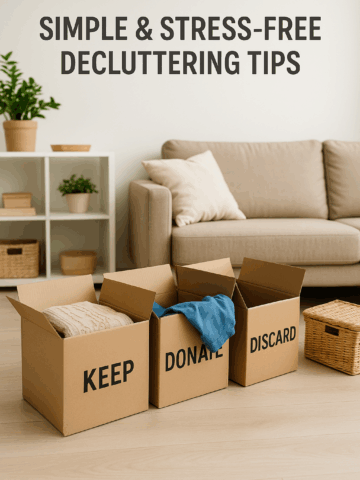Learn who's responsible for clearing snow and ice around your home, condo, or rental property this winter. From local bylaws to HOA rules and liability basics, this guide explains how to stay safe, compliant, and avoid fines or injury claims when the snow starts to fall.

Disclaimer: this post may contain affiliate links, and every purchase made through these links will give me a small commission (at absolutely no extra cost for you!) AS AN AMAZON ASSOCIATE AND REWARDSTYLE MEMBER, I EARN FROM QUALIFYING PURCHASES. See Privacy Policy for additional info.
The first heavy snow hits, you grab a shovel, salt the walkway, and hope the plows make it through before morning. Then you look at the sidewalk everyone uses, or the community lot by the mailboxes, and the question gets real. Who clears what, and who is on the hook if someone slips?
Winter can turn a friendly block into a patchwork of slick spots. Knowing where your responsibility starts and ends protects your neighbors and protects you from fines or claims. Whether it's a single-family home, townhouse, condo, or apartment, liability follows control and maintenance, not just the property line.
Understanding Snow Liability Basics
Fresh snow looks harmless until it compacts or refreezes. That is when it becomes a safety issue. Many towns require homeowners or tenants to clear sidewalks and driveways within a specific window after the snow stops. The idea is simple. Keep paths safe for anyone who needs to pass by.
Skip your section, and you invite citations or a claim if someone falls. The same logic applies in shared neighborhoods and multi-unit buildings. The person or group responsible for maintenance is expected to manage snow and ice.
Start with your local rules. Your city or township website will list clearance timelines and what counts as compliant.
When Property Lines Get Blurry
Snow drifts where it wants, which is why shared spaces cause confusion. In townhouse communities and condo developments, responsibility usually follows the governing documents. Many HOAs cover plowing and de-icing for common areas with community funds. Renters often rely on landlords or property managers to keep shared walkways and lots usable.
Read your lease or bylaws before winter. Some agreements shift the duty to residents for the small areas just outside the door or garage. Clear terms prevent last-minute arguments when the first storm hits.
How Shared Spaces Are Maintained
When many people use the same sidewalks and parking areas, hiring professionals is common. HOAs, apartment complexes, and local businesses hire teams that specialize in commercial snow removal to keep high-traffic areas open and minimize risk.
These services have the equipment and materials to clear large surfaces fast and apply de-icers that keep ice from returning after the plow leaves. If you are unsure whether your community contracts help, ask your property manager or HOA before the season starts. Clarity now saves headaches later.
What Local Laws and Regulations Say
Rules change from place to place, and the deadlines can be tight. Many municipalities require cleared sidewalks within hours after a storm ends. Property owners next to public walkways are often responsible for keeping those routes safe. In rentals or managed communities, local codes still apply, but the duty typically belongs to the owner or manager. Miss the window and you risk fines or a liability claim.
For a practical technique to pair with the legal side, the National Safety Council's snow removal safety guide covers smart habits, such as warming up before shoveling, pushing instead of lifting when possible, pacing yourself, and choosing the right de-icer for your climate. Match those basics with the timelines posted by your city or county to stay safe and compliant.
Keeping Your Own Property Safe
Even if a crew handles the shared areas, your steps and walkways still need care. Snow builds up fast in shaded corners and near the roofline, where melt and refreeze turn to glare ice. Clearing early keeps traction and shows you are doing your part.
Prep before the first storm. Stock pet-safe ice melt, check your shovel or snow blower, and mark driveway edges so boundaries stay visible under fresh snow.
Give the roof attention, too. Loose shingles, weak flashing, and clogged gutters can lead to ice dams and leaks once storms arrive. Prioritize winter roof maintenance: clear gutters before a freeze, secure loose shingles, check attic insulation for heat loss, and seal around vents and chimneys.
When to Call in the Pros
Some winters outpace even the most diligent routine. If storms stack up faster than you can clear them, or ice keeps forming despite regular treatment, bring in help. A professional crew moves heavy snow efficiently and applies treatments that last through the next freeze.
If your community already has a contractor, learn their schedule and priorities. Shared roads and sidewalks usually come first. For individual homes with long or steep driveways, a local plow service can be the difference between safe passage and a lingering hazard.
The Bottom Line
Winter responsibility is about people moving safely through the places they share. Know your rules, keep your area clear, and communicate with the folks who manage the rest. When everyone handles their part, the snow season is simpler, safer, and far less stressful.







Leave a Reply